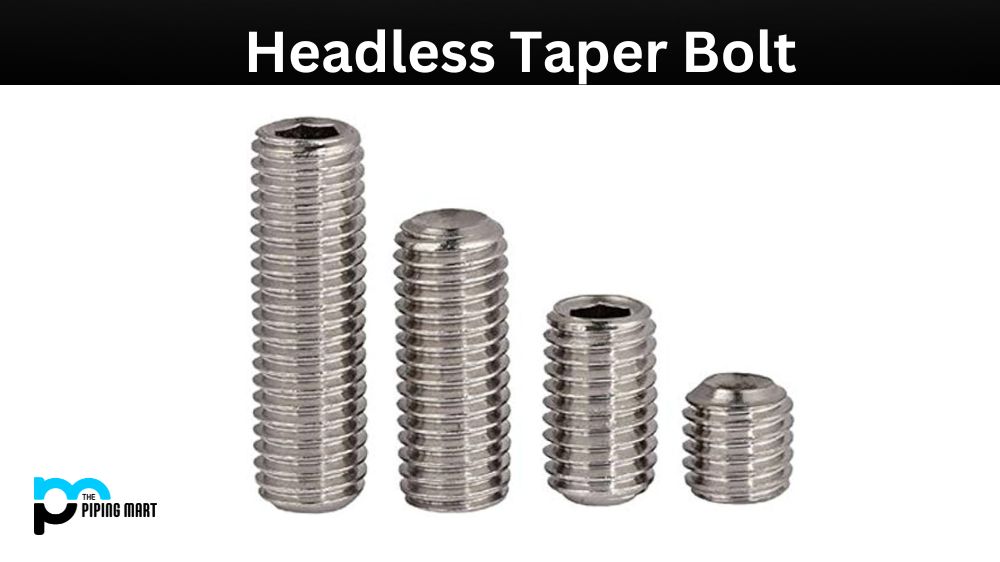In today’s world, we all seek solutions that provide efficiency and cost-effectiveness in every aspect of life. Similarly, when it comes to the construction industry, a headless taper bolt is the most innovative fastening solution. For instance, it offers effortless installation, improved structural strength, and increased durability. It is one of the most preferable choices for industries that want to optimize the stability of their products. This blog covers everything you need about headless taper bolts, including their properties, applications, and uses.
What is Headless Taper Bolt?
A Headless Taper Bolt, also known as a blind taper bolt or an internal taper bolt, is a type of fastener that features threads on the inside and outside surfaces of its shaft. It doesn’t require access to both sides when used and it’s designed for use in a tapped hole from one side only. This makes them ideal for applications where space is limited or accessible only from the backside.
Headless Taper Bolt Properties:
Headless taper bolts are made of high-quality steel and are characterized by their unique design, as the name suggests. The tapered end of the bolt allows it to be inserted into a drilled hole effortlessly. When torque is tightened, the force is distributed along the entire length of the bolt, resulting in better load distribution throughout the joint. The headless design of the bolt means that it does not require an external nut, making it an ideal solution for confined spaces. The surface of the headless taper bolt is rust-resistant, ensuring high durability even in harsh environments.
Headless Taper Bolt Uses:
Headless taper bolts have various uses in various industries, including aviation, automobile, manufacturing, and marine engineering. They are used in construction applications where a strong connection is needed between two materials without unsightly hardware. Headless taper bolts can join wood, concrete, stone and metal materials. They are used in concrete formwork, scaffoldings, and temporary structures to offer an easy and efficient connection.
Headless Taper Bolt Application:
One of the significant advantages of headless taper bolts is their ease of installation. The installation involves drilling a hole in the desired location, inserting the bolt, and tightening it with a specialized wrench. The headless design allows it to fit in confined spaces, making it a popular choice in applications requiring materials to join in tight spaces. Once installed, headless taper bolts provide a clean and aesthetically pleasing look to the connection.
Benefits of Using Headless Taper Bolt:
There are enormous benefits to using headless taper bolts, including increased structural integrity, decreased installation time, and improved durability. They have a high tensile strength and can withstand high shear forces. The superior load distribution property helps uniform stress sharing, resulting in balanced and stable structures. Because headless taper bolts do not require an external nut, they are easy to install, saving time and reducing labour costs. They are also beneficial when aesthetics matter because the bolt’s headless design does not compromise the appearance of the finished product.
Conclusion:
The headless tapered bolt is an innovative fastening solution that revolutionizes traditional methods. Its unique design and exceptional properties make it an ideal solution for various industry applications. The headless design makes it easy for headless taper bolts to be installed in confined spaces, provide a clean and aesthetically pleasing joint and contribute to the structural stability of the finished product. It has enormous benefits; increased durability, high tensile strength, and the ability to reduce installation time are key among them. Therefore, headless taper bolts are the way to go if you want to achieve a simple yet effective joint.
Meet Heer, a dynamic and driven writer learning tricks of her trade in the metal industry. With a background in Digital Marketing, Heer brings a unique perspective to her writing, sharing valuable insights. Apart from blogging she like reading and hiking.




